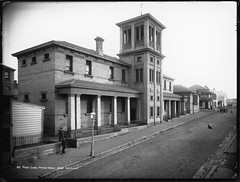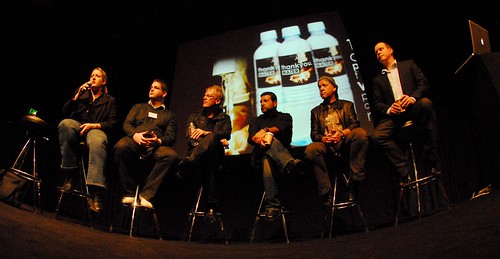 You know what it’s like – the brief hits your desk and you know it’s going to hurt you. The client wants impact. Results. Creativity to burn. It needs to be original, classy and out of left field – but you also need to bring this baby in on budget. And quickly. This is a competitive pitch and there are three other agencies lining up against you.
You know what it’s like – the brief hits your desk and you know it’s going to hurt you. The client wants impact. Results. Creativity to burn. It needs to be original, classy and out of left field – but you also need to bring this baby in on budget. And quickly. This is a competitive pitch and there are three other agencies lining up against you.
If I was you, I’d read the brief and jot down my first ideas on a post-it note, then file it away in my notepad. Then I’d talk to the team.
Rethinking innovation
But Umair Haque, economist and Director of the Havas Media Labs, suggests that we need to rethink everything we do. A proponent of “radical innovation”, Haque’s approach is to question the foundations of our actions – in short – to question how we innovate (and therefore what it means for us, our clients and our businesses).
Take for example, Haque’s well-known Smart Growth Manifesto where he turns notions of innovation on their heads:
- Outcomes, not income
- Connections, not transactions
- People, not product
- Creativity, not productivity
In some ways this seems obvious, but operationalising such innovation requires broader and deeper business thinking. If you focus not on income but on other measurements (such as outcomes) – then this means inventing new metrics as part of the process. How do we measure sustainability for example? What about happiness or wellbeing? The same with focusing on creativity over productivity – or the other two pillars.
This is not to say that such efforts should not be taken. Quite the opposite. You see, embracing such approaches will FORCE you to think and work through the consequences. In the short term, this will lead you to find equivalences – you will create and manage outcomes but find linkages to income. You will focus on people and their ideas, inspiration and energies, yet match it to their productivity and so on. But this journey will not be undertaken UNLESS you take the first step.
Rethinking branding
But how do we apply this thinking to the problems and challenges of branding? This recent post from Umair Haque on Twitter’s Ten Rules for Radical Innovation provides some pointers.
- Ideals beat strategies: What is the core problem that your brand is trying address. How is it making the world better in its small niche? Concentrate on the idea and let the strategy come.
- Open beats closed: Find the points of interdependence – between brands and their consumers, employees and their customers, executives and their teams. Share and tell the stories that emerge.
- Connection beats transaction: The underlying currency of this new way of thinking is TRUST. Build transactions into your branding by facilitating a sense of trust. Do this as a precursor to transactions. Do it without expectation.
- Simplicity beats complexity: Your customers want to do business with you. Don’t make it difficult for them. Design your offerings around the experience that your customers can share with others. Make sure that your communications are clear.
- Neighbourhoods beat networks: Most brands haven’t figured out that there are real people behind the avatars that flash across a Twitterstream. The network is nice but remembering that we are tribal – and above all – local – means that you have to think, act and behave as if everyone knows where you live. Really. Think of the consequences and revisit your brief.
There are another five rules that Haque shares in his article – but I will leave these to your imagination.
Returning to the brief
In many ways we operate in an echo chamber. We all read the same blogs, websites, forums and magazines. We watch the same TEDtalks and download the same iPhone apps. How do we then, out-innovate when it comes to our clients?
Chances are that your three competitors will be entering their own creative brainstorming space in the same mindset as your own team. Your best chance at out-thinking your competition is to question the foundations of your own work. Rethink thinking. Rethink creativity. Rethink strategy.
Oh, and just as you go to start work on your response to the brief, take out that original post-it note and read what you wrote. That’s your gut instinct. Sometimes you’ve got to just go with that too.


